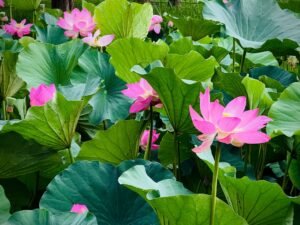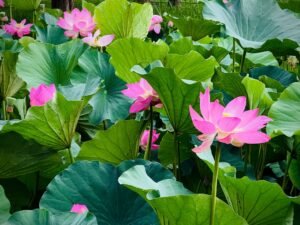

20 Norwegian Words for House and Home
Learning Norwegian vocabulary related to house and home is essential for anyone living or planning to live in Norway. Having a good understanding of these words can greatly enhance your everyday life, whether you are renting an apartment, buying a house, or simply visiting someone’s home. By knowing the appropriate vocabulary, you can effectively communicate with landlords, real estate agents, and even your neighbors. Additionally, understanding these words will allow you to describe your own living space and preferences accurately.
Table of Contents
ToggleEssential Norwegian words for describing rooms in a house
When it comes to describing the different rooms in a house, it is important to know the appropriate Norwegian words. Some common rooms you may encounter include the bedroom (soverom), living room (stue), kitchen (kjøkken), bathroom (bad), and dining room (spisestue). These words are essential for understanding housing listings and discussing your living arrangements with others.
In addition to knowing the names of these rooms, it is also useful to learn adjectives that can be used to describe them. For example, you may want to describe your bedroom as spacious (romslig), your living room as cozy (koselig), or your kitchen as bright (lys). These adjectives can help you convey your preferences when looking for a new place to live or when discussing your current living situation with others.
Norwegian words for furniture and household items
To effectively communicate about your living space, it is important to know the names of common household items and furniture in Norwegian. Some examples include table (bord), chair (stol), lamp (lampe), sofa (sofa), bed (seng), and wardrobe (garderobe). These words are essential for describing the furniture you have or need in your home.
In addition to these smaller items, it is also useful to know the names of larger furniture pieces. For example, you may want to know the word for a bookshelf (bokhylle), a desk (skrivebord), or a dining table (spisebord). Knowing these words will allow you to effectively communicate your needs when shopping for furniture or discussing your living arrangements with others.
Vocabulary for describing the exterior of a house in Norwegian
When discussing houses or looking for a new place to live, it is important to know the appropriate vocabulary for describing the exterior of a house in Norwegian. Some common words include roof (tak), chimney (pipe), porch (veranda), and window (vindu). These words can help you accurately describe the features of a house or discuss any issues or repairs that may be needed.
In addition to these specific parts of a house, it is also useful to know adjectives that can be used to describe the exterior. For example, you may want to describe a house as charming (sjarmerende), modern (moderne), or rustic (rustikk). These adjectives can help you convey your preferences when looking for a new home or discussing the style of a house with others.
Norwegian words for different types of homes and living situations
In Norway, there are various types of homes and living situations, and it is important to know the appropriate vocabulary to discuss them. Some common types of homes include apartment (leilighet), townhouse (rekkehus), villa (villa), and cottage (hytte). Knowing these words will allow you to accurately describe the type of home you are looking for or currently living in.
In addition to different types of homes, it is also useful to know words for different living situations. For example, you may want to know how to say that you are living alone (bor alene), living with roommates (bor med romkamerater), or living with family (bor med familie). These words can help you accurately describe your living situation when talking to others.
Words for household chores and cleaning in Norwegian

To effectively manage your household, it is important to know the appropriate vocabulary for household chores and cleaning in Norwegian. Some common household chores include washing dishes (vaske oppvask), doing laundry (vaske klær), vacuuming (støvsuge), and dusting (støvtørking). Knowing these words will allow you to effectively communicate your needs or discuss your responsibilities with others.
In addition to knowing the names of these chores, it is also useful to know the words for cleaning supplies. For example, you may want to know how to say detergent (vaskemiddel), bleach (blekemiddel), or mop (mopp). These words can help you effectively communicate your needs when shopping for cleaning supplies or discussing your cleaning routine with others.
Norwegian vocabulary for home decor and design
If you are interested in home decor and design, it is important to know the appropriate vocabulary in Norwegian. Some common words include minimalist (minimalistisk), bohemian (bohemsk), traditional (tradisjonell), and contemporary (moderne). These words can help you accurately describe your style preferences or discuss different design options with others.
In addition to these style-related words, it is also useful to know vocabulary for different design elements. For example, you may want to know how to say color (farge), texture (tekstur), or pattern (mønster). These words can help you effectively communicate your preferences or discuss different design elements with others.
Words for utilities and appliances in Norwegian
To effectively manage your home, it is important to know the appropriate vocabulary for utilities and appliances in Norwegian. Some common utilities include electricity (strøm), water (vann), gas (gass), and heating (oppvarming). Knowing these words will allow you to effectively communicate any issues or discuss your utility bills with others.
In addition to utilities, it is also useful to know the names of common household appliances. For example, you may want to know how to say refrigerator (kjøleskap), oven (ovn), or dishwasher (oppvaskmaskin). These words can help you effectively communicate any issues or discuss your appliance needs with others.
Norwegian words for gardening and outdoor spaces
If you have a garden or outdoor space, it is important to know the appropriate vocabulary in Norwegian. Some common words include vegetable garden (grønnsakhage), flower garden (blomsterhage), herb garden (urtehage), patio (patio), balcony (balkong), and backyard (bakgård). Knowing these words will allow you to effectively communicate your gardening needs or discuss your outdoor space with others.
Common phrases and expressions related to house and home in Norwegian
In addition to knowing specific vocabulary words, it is also useful to know common phrases and expressions related to house and home in Norwegian. Some useful phrases include “I’m looking for a new apartment” (Jeg leter etter en ny leilighet) and “I need to fix my roof” (Jeg må fikse taket mitt). Additionally, common expressions such as “home sweet home” (hjem kjære hjem) and “make yourself at home” (føl deg som hjemme) can help you navigate social situations related to house and home.
Conclusion
Learning Norwegian vocabulary related to house and home is essential for anyone living or planning to live in Norway. By knowing the appropriate words, you can effectively communicate with others about your living arrangements, preferences, and responsibilities. Whether you are discussing the different rooms in a house, describing the exterior of a house, or talking about household chores and cleaning, having a good understanding of this vocabulary will greatly enhance your everyday life. So, keep practicing and expanding your vocabulary to make the most of your house and home experiences in Norway.
FAQs
Why are these words important?
These words are important for people who are interested in learning Norwegian language and culture, especially those who are planning to live or travel to Norway.
What are some examples of the words mentioned in the article?
Some examples of the words mentioned in the article are “hus” (house), “leilighet” (apartment), “kjøkken” (kitchen), “stue” (living room), “soverom” (bedroom), and “bad” (bathroom).
Are these words commonly used in Norway?
Yes, these words are commonly used in Norway in everyday conversations and written communication.
Can these words be used in other Scandinavian languages?
Some of these words may have similar meanings in other Scandinavian languages such as Swedish and Danish, but there may be slight differences in pronunciation and spelling.
Is it difficult to learn Norwegian?
Learning any new language can be challenging, but with dedication and practice, it is possible to learn Norwegian. There are many resources available online and in-person for those who are interested in learning the language.
What are some other aspects of Norwegian culture that are worth learning about?
Some other aspects of Norwegian culture that are worth learning about include traditional foods, music, art, literature, and outdoor activities such as skiing and hiking.
If you want to learn Norwegian, you can register for classes here. We look forward to hearing from you and helping you become fluent in Norwegian!
Refer a friend and get $150. Join the program here
If you want to learn Norwegian, you can register for classes here. We look forward to hearing from you and helping you become fluent in Norwegian.





